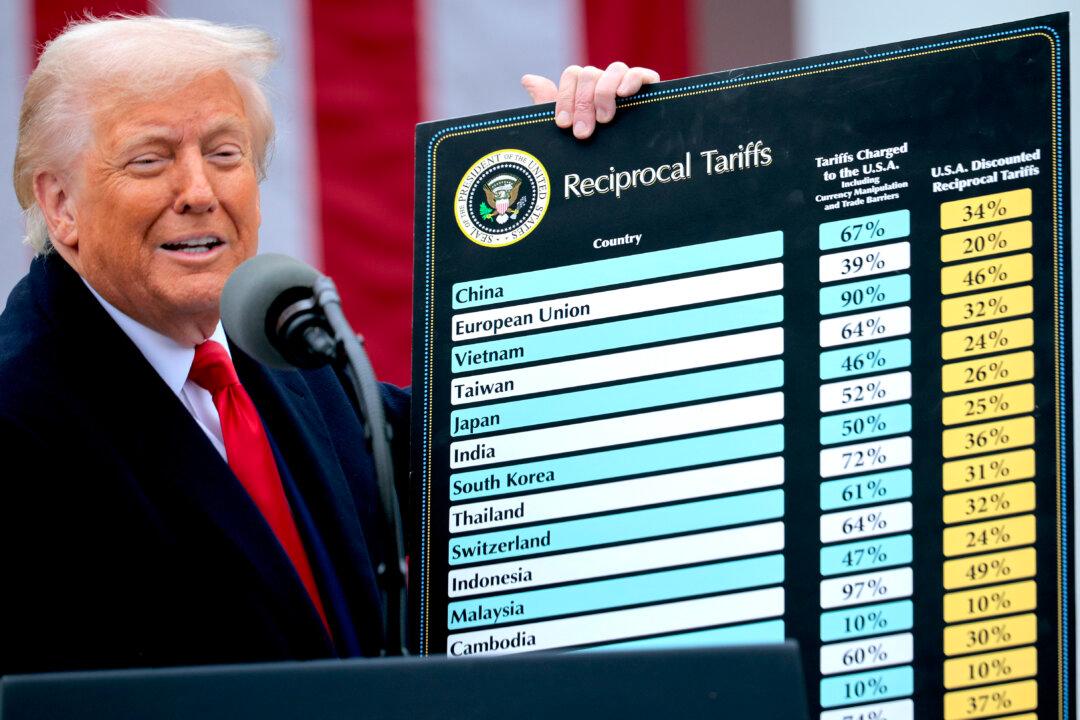WASHINGTON—The global semiconductor shortage during the pandemic has intensified the battle for technological dominance between the world’s two largest economies.
Supply chain shocks and growing tensions with China are forcing the U.S. government to enter the subsidy war to protect American leadership in semiconductors and future technologies.
Microchips smaller than postal stamps are the brains of modern electronics. They enable many products, from smartphones and computers to cars and industrial equipment. They are also essential for artificial intelligence (AI), quantum computing, and advanced wireless networks such as 5G.
The United States remains the global leader in semiconductor design, as well as research and development. American companies control almost half of the market share in global sales of microchips. However, a big portion of their manufacturing has shifted to Asia over the years.
China, by contrast, is sitting at the lower end of the semiconductor value chain. The country only holds 5 percent of market share in global sales, and its companies produce mostly low-end chips. Hence, China relies heavily on the technologies of other countries. In 2020 alone, China spent more than $300 billion on semiconductor imports, becoming the world’s largest chip importer.
The Chinese Communist Party, however, isn’t pleased with this position, and is doubling down and pouring billions of dollars in subsidies into the sector to catch up.
But there’s one challenge that faces Chinese companies, according to Stephen Ezell, vice president of the Information Technology and Innovation Foundation.
“I think it would take China at least 15 years to catch up to where we are today.”
Seeing this gap, Beijing has been aggressively looking to acquire Western companies. In addition, it’s testing other shortcuts such as recruiting talent from abroad and stealing trade secrets, practices that have been going on for years.
It’s also targeting Taiwan, a democratic island that’s about 75 miles off the coast of China. Taiwan is home to TSMC, the most critical firm in the industry, because of its leadership in advanced chips. Many U.S. firms rely on TSMC and worry that Taiwan may fail to protect its intellectual property.
The world’s major chipmakers are racing to produce the smallest chips possible; currently, only TSMC and Korea-based Samsung can produce the cutting-edge standard, which is five nanometers, smaller than a virus.
America’s best foundry, operated by Intel, can provide production at 10 nanometers, while SMIC, the leading Chinese chip manufacturer, is at the 14-nanometer level, according to Ezell.
US Enters Subsidy Competition
According to a report by the White House, a loss of access to chips made at foundries in Taiwan might result in nearly $500 billion in lost revenues for electronic device manufacturers. The report, which was published in June, followed a 100-day supply chain review ordered by President Joe Biden.“That will take a minimum of three years or $350 billion of investment to replace the fabrication capacity lost from the Taiwanese foundries,” Ezell said.
Washington recognizes this vulnerability and is now seeking to fix it. The U.S. Senate already approved a sweeping China bill in June on a 68–32 vote. The legislation, called the U.S. Innovation and Competition Act (USICA), would put $52 billion toward bolstering domestic semiconductor research, design, and manufacturing initiatives.
The House of Representatives is currently working on a similar Democrat-drafted bill. Several Republicans in the chamber have opposed the bill for watering down provisions in the Senate bill pertaining to human rights and Taiwan. It’s unclear when the bill will reach the House floor.
Industry experts say that government support is crucial for U.S. chipmakers to stay competitive. The sector is capital-intensive by nature, and many companies need to spend as much as 20 percent of their revenue on research and development.
Lack of semiconductor production in the country is a “national security risk,” U.S. Commerce Secretary Gina Raimondo said on July 13.
Several chipmakers have already announced ambitious expansion plans in the United States. In March, Intel announced that it would invest $20 billion in two new manufacturing facilities in Arizona. Samsung intends to spend $17 billion for a new plant in Austin to produce 5-nanometer chips, and TSMC has begun construction of a $12 billion factory in Arizona and intends to build five additional plants.
TSMC is currently enjoying its pricing power amid the global chip shortage, announcing up to 20 percent price increases. The supply shortage has enhanced the bargaining position of many foundries, according to a report by Fitch Ratings.
Fitch expects the beneficiaries of the proposed $52 billion would be big companies, including Intel, Samsung, and TSMC. Other beneficiaries would be capital equipment manufacturers such as KLA and ASML Holdings that supply the tools used in advanced semiconductor manufacturing.
The pandemic spiked demand for consumer electronics, leading to a shortage of chips this year. The auto industry has been especially hit hard from the supply shock.
Besides homegrown giants such as Intel, Nvidia, and Qualcomm, a new wave of semiconductor startups is entering the competition to benefit from the large global demand. These companies have been quietly piling up “massive sums” of venture capital to outperform semiconductor giants in designing the next generation of chips.
U.S. startups SambaNova Systems and Groq have joined the AI chip race and attracted the largest venture funding this year.





